
Blind Willie McTell was an American Piedmont blues and ragtime singer and guitarist. He played with a fluid, syncopated fingerstyle guitar technique, common among many exponents of Piedmont blues. Unlike his contemporaries, he came to use twelve-string guitars exclusively. McTell was also an adept slide guitarist, unusual among ragtime bluesmen. His vocal style, a smooth and often laid-back tenor, differed greatly from the harsher voices of many Delta bluesmen such as Charley Patton. McTell performed in various musical styles, including blues, ragtime, religious music, and hokum.

Lemon Henry "Blind Lemon" Jefferson was an American blues and gospel singer-songwriter and musician. He was one of the most popular and successful blues singers of the 1920s and has been called the "Father of the Texas Blues".
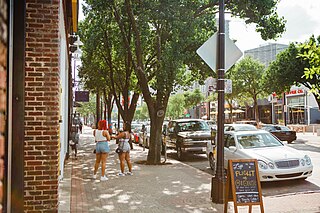
Deep Ellum is a neighborhood of Dallas, Texas, composed largely of arts and entertainment venues near downtown in East Dallas. Its name is based on a corruption of the area's principal thoroughfare, Elm Street. Older alternative uses include Deep Elm and Deep Elem.
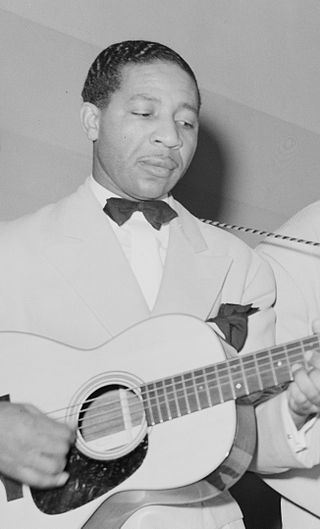
Alonzo "Lonnie" Johnson was an American blues and jazz singer, guitarist, violinist and songwriter. He was a pioneer of jazz guitar and jazz violin and is recognized as the first to play an electrically amplified violin.
James "Kokomo" Arnold was an American blues musician. A left-handed slide guitarist, his intense style of playing and rapid-fire vocal delivery set him apart from his contemporaries. He got his nickname in 1934 after releasing "Old Original Kokomo Blues" for Decca Records, a cover version of Scrapper Blackwell's blues song about the city of Kokomo, Indiana.
"Blues in the Night" is a popular blues song which has become a pop standard and is generally considered to be part of the Great American Songbook. The music was written by Harold Arlen, the lyrics by Johnny Mercer, for a 1941 film begun with the working title Hot Nocturne, but finally released as Blues in the Night. The song is sung in the film by William Gillespie.
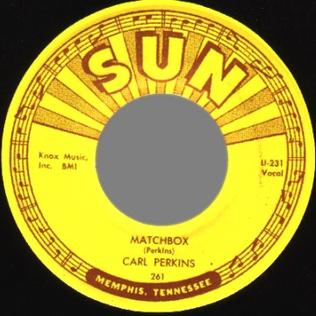
"Matchbox" is a song written and recorded by Carl Perkins and released in 1957. Blind Lemon Jefferson wrote and recorded a song entitled "Match Box Blues" in 1927, which is musically different but which contains some lyric phrases in common.
"Cocaine Blues" is a Western swing song written by Troy Junius Arnall, a reworking of the traditional song "Little Sadie." Roy Hogsed recorded a well known version of the song in 1947.
"Corrine, Corrina" is a 12-bar country blues song in the AAB form. "Corrine, Corrina" was first recorded by Bo Carter. However, it was not copyrighted until 1932 by Bo Carter, along with his publishers Mitchell Parish and J. Mayo Williams.
This is a list of notable events in country music that took place in the year 1941.
The Shelton Brothers, Bob, Joe and Merle, were pioneer country musicians and renowned recording artists based out of Texas from 1933 through the 1960s. They created and popularized the songs Johnson's Old Gray Mule, Deep Elm Blues, These Shoes Are Killing Me, Oh Monah, Match Box Blues and My Heart Oozes Blood For You, "What's The Matter With Deep Elm", "I'm A Handy Man To Have Around" and "Henpecked Husband Blues". The Shelton Brothers also wrote and were the second to record "Just Because", a song that has since been recorded numerous times by various artists including Elvis Presley who included it on his very first album titled "Elvis Presley". The original recording was by Nelstone's Hawaiians, comprising Hubert Nelson and James D. Touchstone. The song's opening line reads: Just because you think you're so pretty, just because you think you're so hot..... "Just Because" was the Shelton's first release on Decca but, due to their popularity, they went on to cut over 150 sides for the label. They also recorded sides for Victor Records and King Records. The Shelton Brothers would become one of the most successful country acts of the era.
"In the Jailhouse Now" is an American novelty blues song originally found in vaudeville performances from the early 20th century, The earliest known version was written in 1915 by Davis and Stafford. It later became associated with Jimmie Rodgers, by way of the yodeling country music versions he recorded in 1928 and 1930, and has been extensively covered in the subsequent years, often giving songwriting credit to Rodgers. The song's first two verses trace the exploits of Ramblin’ Bob, who cheats at cards and gets caught, while the final verse tells about taking a girl named Susie out on the town and winding up in jail together.
This is a list of notable events in country music that took place in the year 1935.
The blue yodel songs are a series of thirteen songs written and recorded by Jimmie Rodgers during the period from 1927 to his death in May 1933. The songs were based on the 12-bar blues format and featured Rodgers’ trademark yodel refrains. The lyrics often had a risqué quality with "a macho, slightly dangerous undertone." The original 78 issue of "Blue Yodel No. 1 " sold more than a half million copies, a phenomenal number at the time. The term "blue yodel" is also sometimes used to differentiate the earlier Austrian yodeling from the American form of yodeling introduced by Rodgers.
"Take This Hammer" is a prison, logging, and railroad work song, which has the same Roud number as another song, "Nine Pound Hammer", with which it shares verses. "Swannanoa Tunnel" and "Asheville Junction" are similar. Together, this group of songs are referred to as "hammer songs" or "roll songs". Numerous bluegrass bands and singers like Scott McGill and Mississippi John Hurt also recorded commercial versions of this song, nearly all of them containing verses about the legendary railroad worker, John Henry; and even when they do not, writes folklorist Kip Lornell, "one feels his strong and valorous presence in the song".

"Darktown Strutters' Ball" is a popular song by Shelton Brooks, published in 1917. The song has been recorded many times and is considered a popular and jazz standard. There are many variations of the title, including "At the Darktown Strutters' Ball", "The Darktown Strutters' Ball", and just "Strutters' Ball".
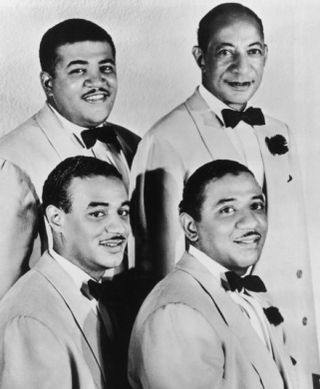
The Mills Brothers, sometimes billed The Four Mills Brothers and originally known as Four Boys and a Guitar, were an American jazz and traditional pop vocal quartet who made more than 2,000 recordings that sold more than 50 million copies and garnered at least three dozen gold records.
"This Train", also known as "This Train Is Bound for Glory", is a traditional African-American gospel song first recorded in 1922. Although its origins are unknown, the song was relatively popular during the 1920s as a religious tune, and it became a gospel hit in the late 1930s for singer-guitarist Sister Rosetta Tharpe. After switching from acoustic to electric guitar, Tharpe released a more secular version of the song in the early 1950s.
Fannie May Goosby also known as Fannie Mae Goosby was an American classic female blues singer, pianist and songwriter. Ten of her recordings were released between 1923 and 1928, one of which, "Grievous Blues", she recorded twice. Goosby was one of the first female blues musicians to record her own material. She also was one of the first two blues singers to be recorded in the Deep South, the other being the dirty blues singer Lucille Bogan.
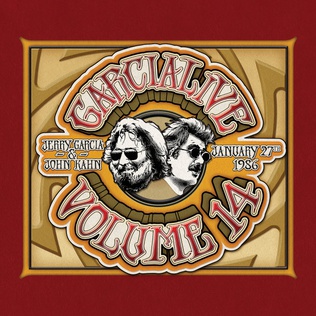
Garcia Live Volume 14 is an album by Jerry Garcia and John Kahn. It contains the complete concert recorded at The Ritz in Manhattan on January 27, 1986. It was released as a CD on July 24, 2020, and as a two-disc LP on August 14, 2020. Some copies of the CD include a bonus disc containing the complete concert recorded at the same venue on the following night.







